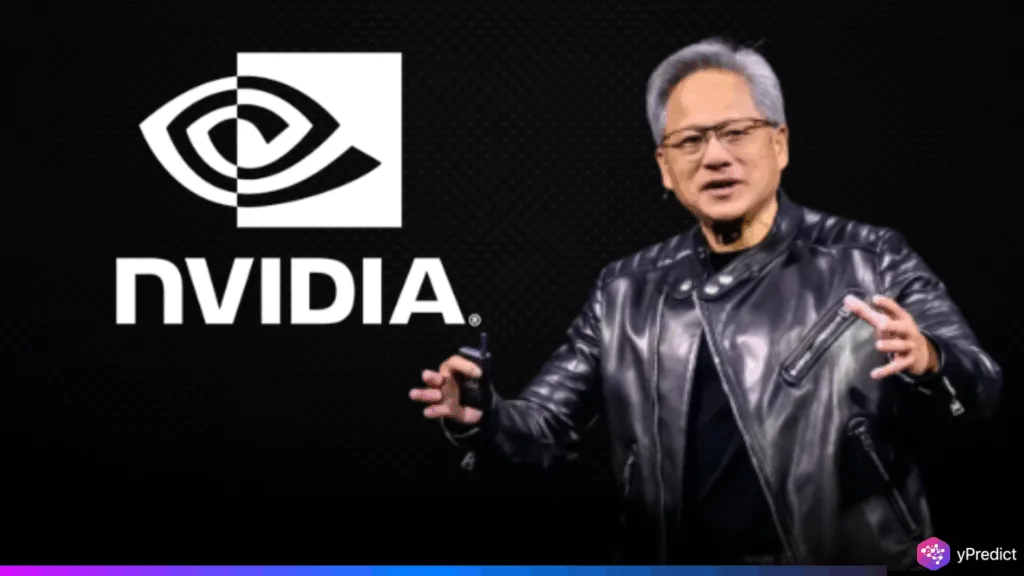
Amid CEO Jensen Huang’s celebrated visit to Computex 2025 in Taipei, Nvidia sent a clear message: it intends to maintain dominance in AI despite mounting headwinds. With cloud giants like Microsoft and Google signaling AI spending cuts and U.S. chip restrictions limiting Chinese sales, investor concerns have grown. Huang’s whirlwind tour, dubbed “Jensanity,” highlighted his effort to counter these fears and showcase Nvidia’s long-term vision. Central to that vision is NVLink Fusion, a technology that allows other chipmakers to plug into Nvidia’s platform, ensuring Nvidia remains the AI industry’s backbone even as sovereign mega-deals grow scarce.
NVLink Fusion: Nvidia’s Strategy to Expand Its AI Platform Grip
At Computex, Nvidia shifted focus from billion-dollar infrastructure deals to scalable, platform-first growth. NVLink Fusion, the centrepiece of this pivot, enables custom chips to connect to Nvidia’s AI stack. This move lets third-party vendors innovate at the chip level while keeping their systems tied to Nvidia infrastructure, driving demand for Nvidia’s AI networking gear, servers, and software. This strategy positions Nvidia as a chip provider and an AI platform upon which others must build. It mimics successful platform plays in AI tech, ensuring recurring revenue and long-term dependency from enterprise and developer ecosystems alike.
Additionally, Nvidia is pushing deeper into enterprise markets with new AI supercomputers tailored for in-house use by businesses. These servers handle everything from AI workloads to graphics and virtual machines. The enterprise push is ambitious but risky. Deals are harder to close, less lucrative than sovereign contracts, and require longer timelines. Still, Huang remains confident. “AI infrastructure is going to be a part of society,” he said. Nvidia is betting that embedding its ecosystem deeper into enterprise and custom chip workflows can offset macro pressures and continue defining how AI scales globally, even as big spending cools.
Taiwan’s Ecosystem Powers Nvidia’s Global AI Ambitions
Nvidia’s week in Taiwan wasn’t just a victory lap but a strategic reaffirmation of its critical ties with the island’s tech supply chain. From chip manufacturing giant TSMC to automation players like Solomon Technology, Taiwan is at the core of Nvidia’s AI hardware operations. Computex served to align this ecosystem behind Nvidia’s expanding infrastructure demands. Taiwanese firms provide the intricate components and expertise needed to build Nvidia’s advanced AI systems. As Nvidia pursues new mega-deals and expands platform partnerships globally, this supplier network will be essential. “The purpose of Computex was to bring together the ecosystem,” said analyst Ian Cutress.
Huang’s reception in Taiwan underscored these ties. He met with leaders from Foxconn, MediaTek, and Solomon, earning praise and even gifts, from banquet invites to bags of guava from his favorite fruit stall. Solomon’s stock, for example, has soared 241% since Huang mentioned them publicly last year. By bolstering supplier loyalty and emphasizing shared growth, Nvidia ensures it has the support to meet global demand. For Taiwan’s AI tech industry, Nvidia’s rise is both a validation and a gateway to global exposure, anchoring Nvidia’s AI empire in its ancestral home. This supplier network will be essential as Nvidia pursues new mega-deals and expands platform partnerships globally
Nvidia Aims to Lead AI’s Future, Not Just Follow Its Momentum
As AI faces a potential plateau in cloud spending, Nvidia is responding with a long-term platform strategy, deeper enterprise outreach, and strengthened supply chain ties. NVLink Fusion and enterprise supercomputers may not be as headline-grabbing as $10 billion Gulf data centers, but they represent Nvidia’s blueprint for sustainable AI dominance. Jensen Huang’s Taiwan tour wasn’t just about fanfare; it was Nvidia’s way of anchoring future growth in ecosystem trust, product depth, and global reach. While other players retrench, Nvidia is building the rails for AI’s next decade. In Huang’s vision, the company won’t just ride the AI wave; it’ll pave the road ahead.






